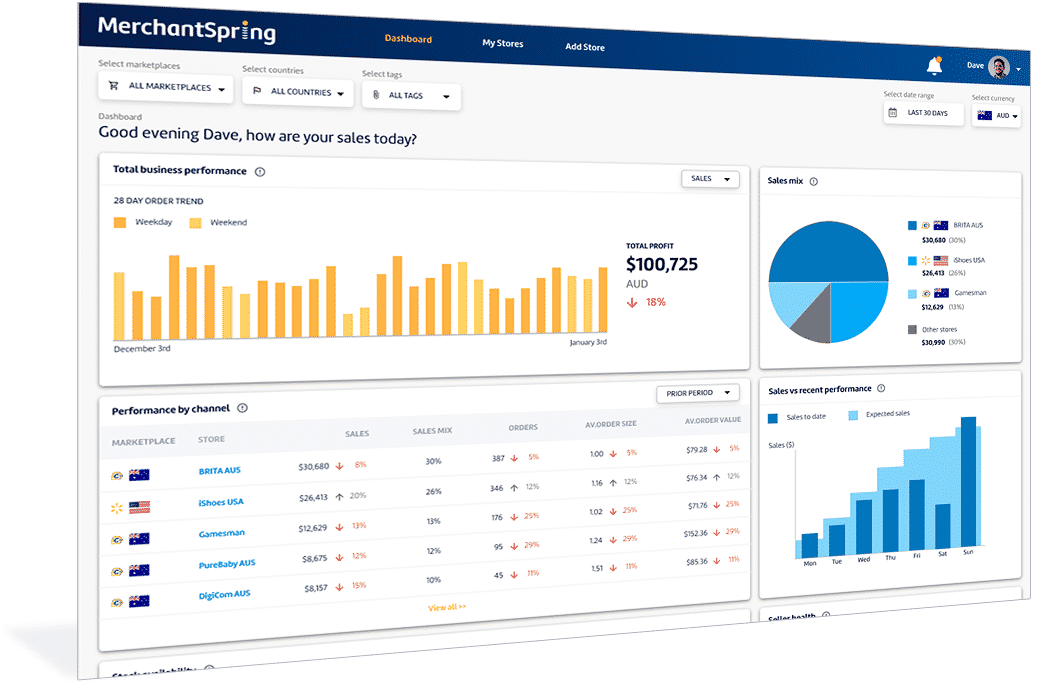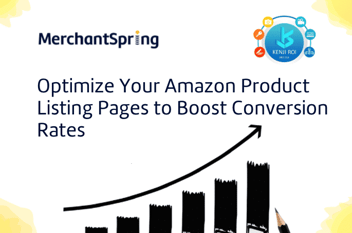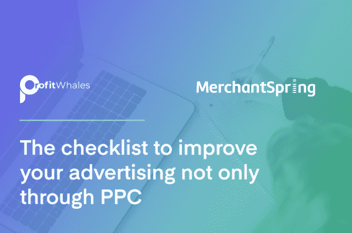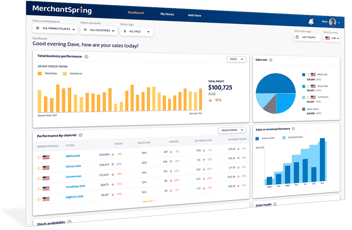Long-Term Growth Strategies for Scaling Your Marketplace Sales
Once your brand has completed all the basics of product detail page optimization (titles, images, bullet points, A+ content, etc.) brand presence (Brand Registry and Store pages), and sponsored advertising, you’ll need to begin looking at options for long-term, sustainable and consistent growth. There are many different tactics to consider including long-tail keyword optimization, new product launch, and catalog diversification, advertising demand-side-platforms (DSP), off-marketplace traffic, influencer marketing, split (A/B) testing, and many others. We’ll explore a couple of these tactics in this article including what they are, why you should care, how they work, and how you can implement them to continue (or accelerate) your Amazon and Walmart marketplace revenue trajectory.
Long-Tail Keyword Optimization
What is it and why should you care?
Long-tail keywords are defined as longer and more specific keyword phrases that visitors with high purchase intent are likely to use when they are close to making a buying decision or when they’re using voice search. Long-tail keyword optimization is generally related to Advertising campaign optimizations, but likely also relevant for your organic SEO keyword optimization throughout the product listing’s titles, bullet points, descriptions, and A+ (Enhanced) Brand Content.
How does it work?
Many times a search term report reveals several highly converting long-tail keywords that have significant search volume. This varies by scale but typically anything with 2,000+ searches per month may have relevance and is worth consideration.
What should you do with it?
We recommend beginning with a download of the search term report and running the query as far back as the past two months of sales. You’re looking at which search terms have given you the most sales.
Find your search term report in the “Reports” tab in Seller Central and select “Advertising Reports” from the drop-down menu. We recommend customizing the timeframe to gather data over the last two months, and you can do this under “Report Period,” and select “Customize.” Then select “Create Report” and once your report is ready for download you’ll see it populate below. Look at your customer search term volume, sort it by the number of orders that each search term brought about, and you can see less competitive long-tail keywords that you can easily rank and get sales from, in your advertising campaigns.
Other places we recommend to find easy wins in the form of long-tail keywords are through market intelligence and advertising optimization software. Helium10’s Cerebro keyword research tool, Jungle Scout’s Keyword Scout, and Keywordtool.io are a few that we suggest, however, there are many others.
Once you find appropriate long-tail keywords, consider ways to leverage them. Perhaps you can create a new ad campaign and raise your bid, especially if your cost is sufficiently low. Once you sell more products under the new/optimized campaigns, your rank will rise for those keywords and you may eventually find yourself on the first page for those search terms, which will result in more organic sales in addition to advertising-attributed sales.
Summary
- Run a Search Term Report and do this regularly (ideally 2X/month).
- Use the reports to help you find long-tail keywords that tend to convert with CPC’s are affordable.
- Add these long-tail keywords into your Amazon/Walmart advertising campaigns and sprinkle them throughout your product listing(s).
Launching New Products
What is it and why should you care?
Every brand needs to establish relevance in the search algorithm for its respective platform. On Amazon, we know this as the A9 algorithm and it looks at a plethora of known and unknown factors to determine the organic (earned) and advertising (paid) relevance for a brand and its product listings. Nobody outside the four walls of Amazon officially knows exactly how the A9 algorithm works, but there has been enough research and data accumulated throughout the past couple of decades to understand which levers are most impactful. A large variable in these algorithms is having a dynamic product catalog in the form of new product launches, marketplace-only products not sold through other sales channels, and product bundling and variations (variety and multi-packs).
How does it work?
There are many ways to incorporate marketplace specific tactics into new product launches, but the basic overarching strategy is to:
- Assure your product is not restricted
- Conduct product, category, and competitive research
- Audit your creative content (photography, images, brand content, design elements, etc.)
- Assure you have a sufficient supply chain to remain in-stock
- Confirm you’re able to win the buy box
These are only the fundamentals, and there is much more content available on how to tactically launch products in select categories or under certain market conditions with the best chance of success.
Pro Tip: To generate new product ideas, we’ve found the “Customer Also Purchased” ribbon in the product detail page to be a great place to find opportunities to add relevant, complementary products that you know shoppers are already purchasing along with your products. Why shouldn’t they simply be purchasing them from your brand?
What should you do with it?
Beyond a steady launch cadence of new products in your Amazon or Walmart account, we’re also proponents of “marketplace-only” products, which are products that you develop or sell only on marketplaces like Amazon and Walmart and are not available in other sales channels like bricks & mortar or your D2C website. There are many benefits to this approach, but if you have an omnichannel sales strategy it keeps all the headaches of minimum advertised price (MAP), channel diversion, and resellers, to a minimum. This prevents channel conflict headaches and your Costco buyer won’t be calling to ask why products on Amazon are listed for cheaper than their wholesale price (as an example).
Another tactic we recommend is diversifying your product catalog through bundling. This can fit along the lines of marketplace-only products (bundles) discussed above, or by leveraging “virtual bundles” through your marketplace provider. Virtual bundles are defined as complementary products which are purchased together from a single detail page. This allows brand owners to offer “bundles'' without packaging items together or changing inbound inventory. Beyond diversifying your product offering to shoppers, our experience has shown that virtual bundles can be effective to increase average order value (AOV), improve discoverability, and benefit organic search rank and advertising efficiency.
Summary
- Have a steady cadence of new product launches within your marketplace (Amazon/Walmart) account.
- Complete detailed product research for new ideas to assure your new launch will be successful.
- Consider developing and launching “marketplace-only” products that are unique to that respective marketplace channel and don’t risk brand or pricing conflicts with your other sales channels.
- Look at ways to diversify your product catalog through bundling, variety, and multi-packs. Many times you can let your marketplace partner like Amazon or Walmart manage the pick, pack, and ship requirements for these within their warehouse so it’s very little impact on your manufacturing or warehouse operations.
Guest Author

Dave VanderJagt is currently the Director of Business Development at Lunge Marketing, a full-service Amazon agency located in Seattle, Washington. Dave has coached and led business development at several of the top Amazon and marketplace agencies and wholesalers. He’s worked with hundreds of Amazon brands of all sizes within the Seller Central, Vendor Central, and Hybrid platforms, and architected highly customized content, PPC and display advertising, and channel control strategies that enable brands to overcome marketplace challenges and reach their growth goals. His sales leadership has enabled these organizations to complete successful fundraising rounds as well as full acquisition (exits).









Add a Comment